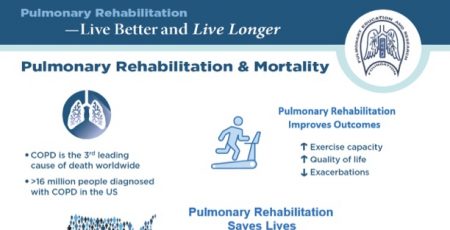01 Oct Portable Oxygen Systems Essential for Patients with COPD
By Brian L. Tiep, MD
Director of Pulmonary Rehabilitation
City of Hope National Medical Center
Oxygen therapy has been known or believed to benefit patients with several different illnesses since around the time of the American Revolution. Two major studies performed in the 1970’s, one in the USA and the other in the United Kingdom, showed that in patients whose blood oxygen level was low, administering oxygen improved their survival. Other studies demonstrated an improvement in quality of life. Recent studies showed that many of these patients could benefit from oxygen during exertion (like walking). Pulmonary rehabilitation programs train patients to exercise, which greatly improve their ability to function in life and relieve shortness of breath. Patients who are sedentary tend to do worse, whereas patients who are active tend to do better and enjoy a higher quality of life. Thus, those who require oxygen should have very lightweight and portable systems that enable them to be active. Over the past 30 years, oxygen-conserving technology has enabled the development of the highly portable systems. Two of the devices derived from these developments include: portable oxygen concentrators and small oxygen cylinders that refill from the patient’s home oxygen concentrator.
Until very recently, patients were increasingly enjoying and living the advantages of these developments. However, Medicare has restructured reimbursement to the companies providing oxygen making it much more difficult for patients to have a highly portable system. Because the reimbursement is so low, companies that have won the competitive bid (oxygen from the lowest bidder) may deny or delay the patient from receiving a portable system. However, portable oxygen for patients who can be active is considered standard of care. It is therefore incumbent upon patients and their healthcare providers ensure the use of a truly portable system. Physicians should specify the exact system to the oxygen supplier and carefully fill out Certificate of Medical Necessity so that the equipment providers can be reimbursed for their equipment and service. Once received, the patient should utilize their portable system in public and share the word with their fellow patients – of the benefits of living an active and quality life while on oxygen.





Patricia Whiting
Posted at 06:57h, 02 OctoberAgreed, but equally important is the issue of patients not using their oxygen when out in public! Every time I go to a Better Breathers meeting, the vast majority of those bringing portable oxygen systems are not using them, even though they cannot speak more than a few words without huffing and puffing. When asked why in the world they would lug around a POC or O2 tank if they aren’t going to use it, they say “I don’t really need it unless I’m walking or exercising,” even though their low saturation levels and visible shortness of breath demonstrate the contrary. Part of their reluctance may be chalked up to vanity, but I think many are not aware of the harm they are doing to themselves by choosing to be hypoxic, thinking that it’s somehow virtuous to “tough it out” and not give in to the need for oxygen unless they absolutely cannot function without it. I urge all healthcare workers to make sure that their patients understand the harm they are doing when they choose not to use the supplemental oxygen their physicians have prescribed.
PERFadminAVB
Posted at 08:32h, 07 OctoberDear Patricia,
Thanks for your comment. I couldn’t agree more that many people have an uncomfortable relationship with their oxygen therapy. In my experience, though, the best way to get an oxygen patient to use their oxygen correctly and intelligently is through participation in a pulmonary rehabilitation program.
Very best regards.
Rich Casaburi
Brian Tiep
Posted at 20:43h, 04 OctoberYou make a very important point! Oxygen improves survival and saves unnecessary wear and tear on the body. It is our role as health care providers/educators to make sure that the person prescribed oxygen understands its critical function. It is the role of the patient to make sure they understand. Oxygen is an expensive therapy that serves a critical therapeutic function. It is worth the expense only if used as prescribed.
Another important point: oxygen is not the only cause of shortness of breath. You can be short of breath but not need oxygen. Conversely, you can be breathing comfortably but your oxygen level may be low and possibly doing damage to your body. The only way to be sure that you are getting enough oxygen is to have your pulse oximetry tested during rest and exertion. . . . more on later discussions.
Karen Deitemeyer
Posted at 04:41h, 05 OctoberHello, Dr. Tiep,
You may not remember me, but we met in Miami at the Pulmonary Horizons Conference this summer. I was one of the 5 COPD patients who were panelists (the one with no “official” credentials, just a patient). Many years ago I purchased my own portable oxygen concentrator, but when it began to wear out after a few years, I asked my PC to write a script for a newer, less heavy POC. She did exactly as you suggested – she wrote the script for the exact make and model that I requested (I had been fortunate to be able to demo one at a conference I had attended, so I knew what would work well for me). The DME who was contracted with my Medicare Advantage Plan did not have the POC she specified – they had only 2 models, both of which were too heavy and bulky for me to manage. I was very fortunate to have a doctor who would go to bat for me – she documented in detail why I must have the POC that her script called for, and eventually, after 6 or 7 months and more documentation, I received what I needed and wanted to have. Too many times patients and their doctors just give up.
Will you be in Tampa at the AARC Congress? If so, I hope to meet you again.
Tina Lykes
Posted at 09:25h, 15 OctoberWorking in the DME industry, we have seen a tremendous increase in orders for POCs *portable oxygen concenteator’ With the deep cuts in reimbursement DME companies actually spend more to purchase most of the POCs than Medicare reimburses for the system-not cutting into profit but more that the insurance pays altogether for the portable system. History has shown that these systems will not last the 5 years required by Medicare (there are always going to be at least battery issue). Late night advertisements have lead pts & physicians not familiar at all with POC limitations to order them at every pt request. The smallest units (which every pt wants! ) do only pulse dose delivery – usually just 3 lpm) The POCs that do continuous flow only up to 2-3 lpm continous and are larger/heavier, and the demand of continous flow cause the battery life to be extremely limited.
Also, we all know that COPD gets worse so forcing DME companies to buy a POC that cost more than reimbursement, maintain that POC through the issues it will have (batteries not covered under warranty etc), and buy another one when pts disease out progresses the capabilites of the “smallest, lightest POC” pt wanted at set up-will bankrupt DMEs across the nation. The payors, physicians and pt population need to realize the cuts are just too deep for the most expensive systems to be provided for the masses. And more cuts are pending…soon the only DME companies left will be the mega corporations who often have reputations of poor customer service.
Hospitals, physicians and other ordering entitles need education and enlightenment if the reality of the reimbursement, cost and limitations of POCs.
Joan Thompson
Posted at 10:17h, 17 OctoberNot all pulse dose systems work the same. The patient needs to be checked on the system to ensure adequate correction. Writing a script for a system that may not be adequate is risky for that patient. Most POCs will only last a few years and are expensive to fix.
Diann Englehart
Posted at 21:30h, 25 OctoberI am on O2 24/7 (3 lpm normally) and seem to be very active on spite of it. I have a standard concentrator at home with 50 feet of hose so I can do laundry, garden and take out the garbage. For errands about town, I use a A or B tank. I have a Respironics Ever Go for travel ( I am now visiting Mexico but NY and FL are home). Of course, I need to be careful because I can only get 2 lpm from my portables. My point is, I do all this and meet lots of people while hooked up to O2. What really helped me was the Oxyview glasses and my Vera Bradley backpack. I guess I am a bit vain, but probably more ashamed that I got myself into this. Cannula at home, but Oxyview for public.
Christine Geary
Posted at 17:26h, 08 MayIs the inhaling of oxygen last for awhile or just when you’re inhaling it?
Christine Geary
Posted at 17:30h, 08 MayI’m out of breath the minute i wake up and sit up, does the oxygen help me breath easier for awhile after i stop inhaling it?
PERFadminAVB
Posted at 14:19h, 15 MayDear Mrs. Geary,
We’re sorry to hear that you are having breathing problems. Being short of breath as soon as you wake up is certainly abnormal, but without knowing more about your illness, it isn’t possible for us to give you recommendations about treatments that might be of benefit. Your physician, who will know your complete medical history, will be better able to give you advice.
People with lung disease who have low levels of oxygen in their blood often feel less short of breath while breathing supplemental oxygen. But the effects of oxygen breathing only last for a few minutes after you stop inhaling it.
Best wishes.